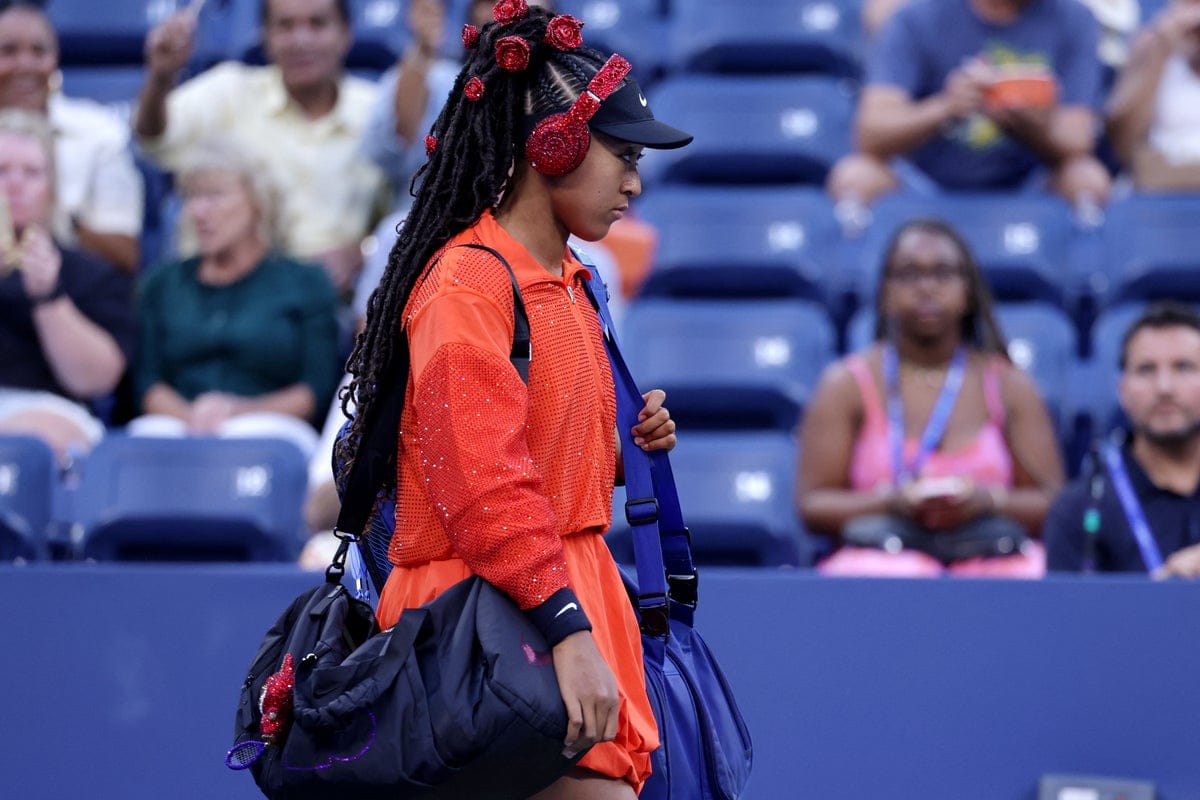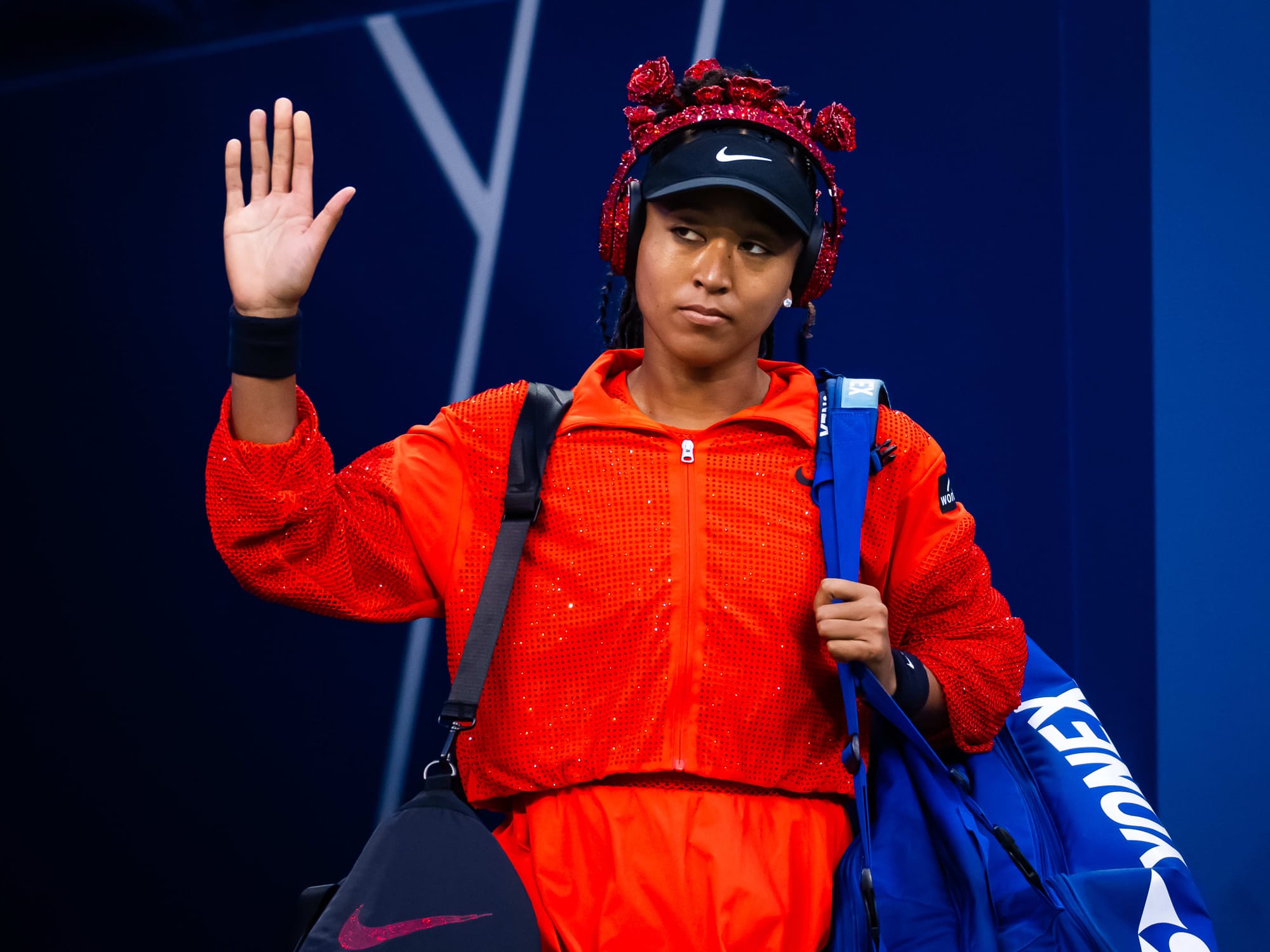The Grand Slam of Style: How Naomi Osaka’s 'Goth Lolita' Look Redefined On-Court Fashion at the US Open
Naomi Osaka’s US Open 2024 outfit was a viral masterpiece. This deep dive explores her "Goth Lolita" look, its Japanese culture inspiration, her viral "Billie Jean Bling" mascot, and how she's using fashion to tell a powerful story on and off the court.

Written by Lavanya, Intern, Allegedly The News
NEW YORK, August 28, 2025
The floodlights of the USTA Billie Jean King National Tennis Center have long served as a stage for athletic dominance and, increasingly, sartorial statements. But on the opening night of the 2024 US Open, Naomi Osaka didn't just walk onto the court; she initiated a cultural moment. Clad in a custom black ensemble adorned with voluminous bows and ruffles, the four-time Grand Slam champion made her highly anticipated return with a look that was part avant-garde runway, part anime-inspired fantasy.
Anatomy of a Viral Look: The Inspiration and Design
Naomi Osaka’s 2024 US Open kit was a deliberate and deeply personal project. Unlike the rose-themed outfit of previous seasons, this year's collaboration with Yoon Ahn, co-founder of the Tokyo-based label Ambush, was inspired by the vibrant and rebellious subcultures of Japan, specifically the "Lolita goth" aesthetic. This intricate look was not a last-minute decision; it was the result of a long-standing creative dialogue between the athlete and the designer.
The night version of the kit, a sleek black dress with a tiered ruffle skirt, was accompanied by a matching bomber jacket featuring a large, pillowy white bow on the back. Tiny bows were even affixed to the backs of her custom Nike shoes. Osaka revealed in a post-match interview that the inspiration came from her memories of visiting Japan and seeing the proliferation of "frills and bows" in the streets of Harajuku. The look was a fusion of high-performance sportswear and a "magical girl" transformation narrative, a concept Osaka described as allowing her to "let go of the expectations I put on myself" and feel as if she were stepping into a "super-suit."
Yoon Ahn, a designer known for her subversive take on classic silhouettes, perfectly executed this vision. She captured the "cutesy-ness and girlishness" of the Lolita aesthetic and translated it into a garment that was both functional for a professional tennis match and a bold, artistic statement. The daytime version, a vibrant green, provided a serene counterpoint to the powerful black "armor" she wore under the lights. This dual-outfit strategy for day and night matches is a first for Osaka, further cementing her commitment to using fashion to reflect her mindset and mood.
The Case of "Billie Jean Bling": A Mascot for the Digital Age
No discussion of Osaka’s 2024 US Open debut is complete without the viral sensation dangling from her bag: a crystal-covered Labubu figurine she named "Billie Jean Bling." This wasn't just a lucky charm; it was a brilliantly executed piece of athlete branding. The figurine, a popular art toy, was customized with hundreds of red and gold crystals and a miniature blue tennis racket.
Osaka's playful naming of the mascot, a clever and affectionate nod to tennis legend Billie Jean King, was an instant hit. It created a sense of humor and approachability that resonated deeply with her audience. In a press conference, she held up the sparkling creature, a broad smile on her face, and clarified, "She's named Billie Jean Bling. Not Billie Jean King. Billie Jean Bling." The moment was perfect for social media, leading to an explosion of memes, fan art, and thousands of posts demanding a "BJB" of their own. This small accessory became a powerful symbol of Osaka’s personality, a blend of serious athletic focus and a lighthearted, deeply creative spirit.
A Fashion Retrospective: Tracing a Trailblazer's Style
Naomi Osaka’s career has been a fashion narrative in motion, each outfit marking a new chapter in her evolution as an athlete and an individual.
- 2018 US Open: Her breakout victory saw her in a simple, red Nike dress. It was a no-frills look that let her powerful game speak for itself.
- 2020 US Open: In a defining moment for sports and activism, Osaka wore seven different masks, each bearing the name of a victim of police brutality. This was a fashion statement that transcended style, turning her uniform into a powerful tool for social justice.
- 2021 Australian Open: She wore a vibrant, floral-inspired Nike dress that celebrated her roots and was a stark contrast to the tournament's traditional whites.
- 2024 US Open: The "Goth Lolita" look, with its blend of Japanese subculture, athletic performance, and personal narrative, marks her most elaborate and expressive statement yet.
This evolution shows a clear progression from functional apparel to a form of storytelling. Her style is not about trend-following; it is about setting a personal and cultural agenda.
The Vanguard of Style: Osaka vs. the Icons
To understand Osaka’s place in tennis fashion history, one must look to the greats who came before her. Serena Williams is the undisputed queen of on-court self-expression. Her infamous 2004 US Open denim skirt and her 2018 French Open catsuit were more than just outfits; they were a form of armor, a reclamation of her identity in a sport that often tried to confine her. Williams used fashion to project power, femininity, and a defiant spirit, pushing the boundaries so that players like Osaka could walk through the doors she opened.
Similarly, Maria Sharapova brought a high-fashion, glamorous sensibility to the court. Known for her designer collaborations and use of crystals and sequins, Sharapova's style was a nod to old-school Hollywood glamour, showcasing a polished and aspirational image.
Where Osaka differs is in her use of fashion as an intimate narrative. While Williams's style is often a powerful, defiant proclamation, Osaka’s is a more introspective and culturally referential dialogue. Her outfits, like the "Goth Lolita" look, are not just about spectacle; they are about her connection to her Japanese heritage, her love for anime, and her journey of self-discovery.

The Long Game: Fashion's Future on the Court
The impact of Osaka's US Open outfits extends far beyond the tournament. Her partnership with Nike and Yoon Ahn is a case study in modern athlete branding, showing how a player’s personal story can be translated into a commercially successful and culturally significant product line. The buzz around her look could spark several new trends in sports apparel:
- Hyper-Personalization: Expect to see more athletes collaborating with designers to create hyper-personalized outfits that tell a unique story, moving away from standard team uniforms.
- A-list Designer Collaborations: The success of the Nike x Yoon Ahn partnership will likely lead to more high-fashion designers entering the world of sportswear, blurring the lines between the runway and the court.
- Collectible Mascots: Following the success of "Billie Jean Bling," athletes may begin to release their own limited-edition accessories or mascots, creating a new revenue stream and a way to connect with fans on a more personal level.
- Performance Artistry: The act of walking onto the court will become its own performance, with athletes using their entrance as a moment to reveal a new look or accessory. The "peel-away" jacket or hairpiece is a new staple of this theatrical experience.
Match and Metamorphosis: The Balance of Sport and Spectacle
While the world was abuzz with her outfit, it's crucial to note that Osaka’s performance on the court was just as compelling. In her first-round match, she demonstrated a composed and dominant game, dispatching her opponent with ease. Her power and precision were a perfect complement to her extravagant look, proving that the style was not a distraction but an extension of her confidence.
The media coverage and fan reaction to her match perfectly illustrate this balance. On one hand, you had a detailed analysis of her forehand, serve, and court movement. On the other hand, a parallel universe of discussion about the ruffles, bows, and "Billie Jean Bling." This dual narrative, the sports report and the fashion critique, is a testament to Osaka's unique position in the public eye.
The Super-Suit Theory
Naomi Osaka’s "Goth Lolita" outfit and her viral mascot are more than just a creative choice; they are a strategic act of self-authorship. In a world where athletes are increasingly expected to be brands, Osaka is showing us how to do it with authenticity, humor, and a deep connection to her personal story. Her fashion is a form of armor, a "super-suit" that gives her the confidence to face the pressure of the world stage. It's a powerful lesson for athletes and brands alike: true influence comes from a unique narrative, not just a logo.
Beyond the Sideline
- The Intersection of Art and Sport: In what ways do you believe athletes who use their platforms for fashion and self-expression, like Naomi Osaka and Serena Williams, are elevating their sport from a simple game to a form of performance art?
- The Commercialization of Influence: As athletes' on-court looks become more curated and brand-driven, how do we ensure that this doesn't overshadow the athletic integrity and competitive spirit of the sport?
Sources
Nike's official press releases, interviews with Naomi Osaka and Yoon Ahn, verified social media posts, and sports reporting from the 2024 US Open.




